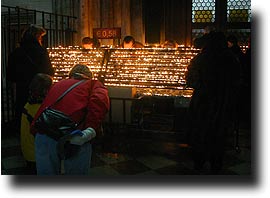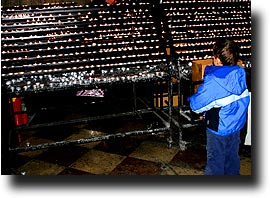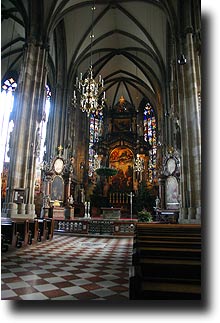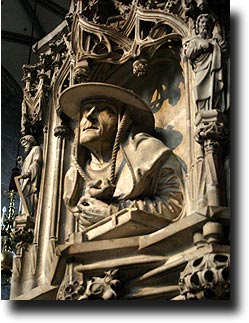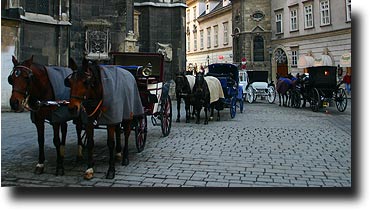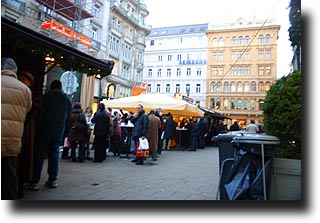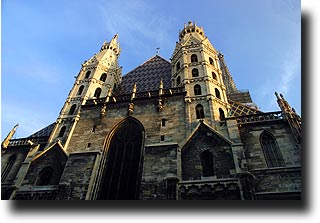
Vienna is one of those cities in Europe that has so much history it is difficult to capture all that it is and all that it means. Like so many cities in Europe, it has a 'history before history' from a Neolithic settlement (the famous Venus of Willendorf is from the Danube valley). Celtic and Roman towns (if you would call them that) were built one on the other over centuries and development continues on to the present. Of course, one must throw in Turks, Huns, Franks, Venetians and Nazis to round out any story about Vienna. |
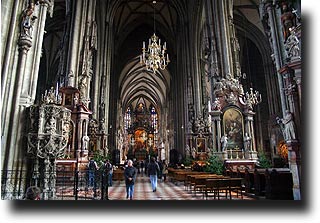
These pictures are of St. Stephans in the Old Town of Vienna. It was built in the mid -1300's by Habsburg Duke Rudolf IV on the base of an earlier Roman sanctuary. Its gorgeous spire is a classic example of Gothic architecture. It, like so many buildings in Vienna, was badly damaged during WWII. However, extensive rennovation makes the scars of this war almost invisible today - perhaps too much so. |
